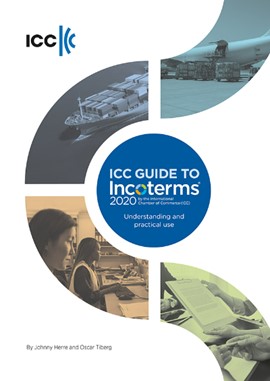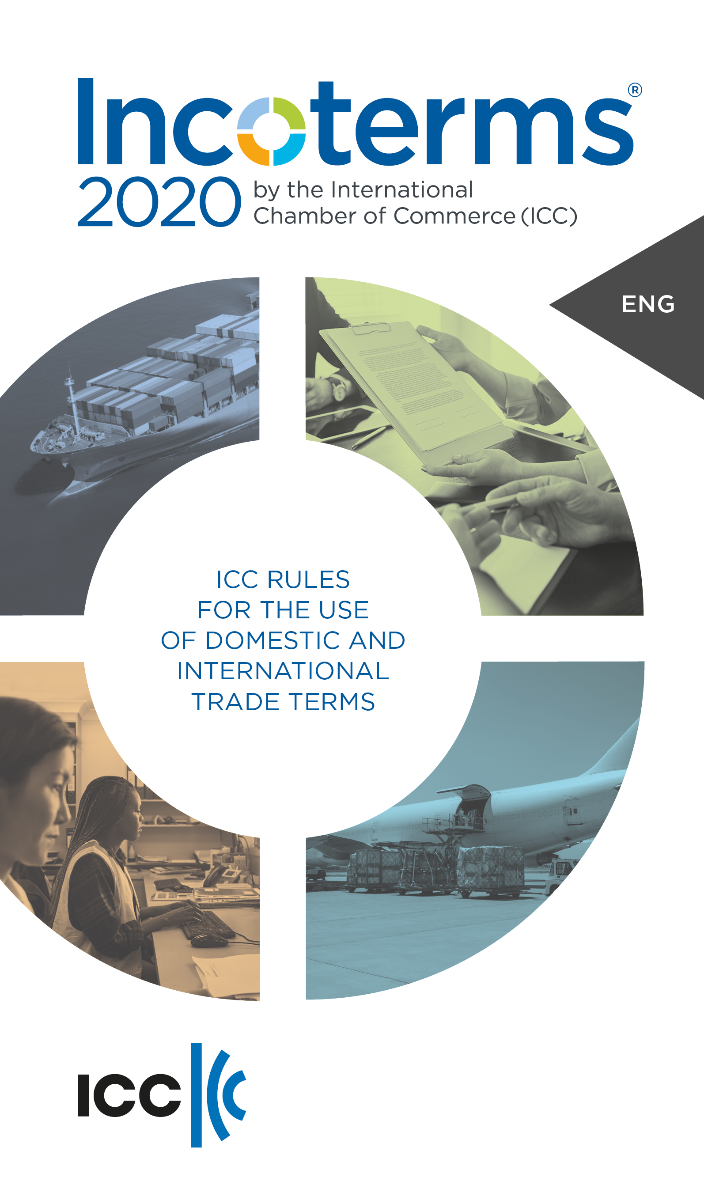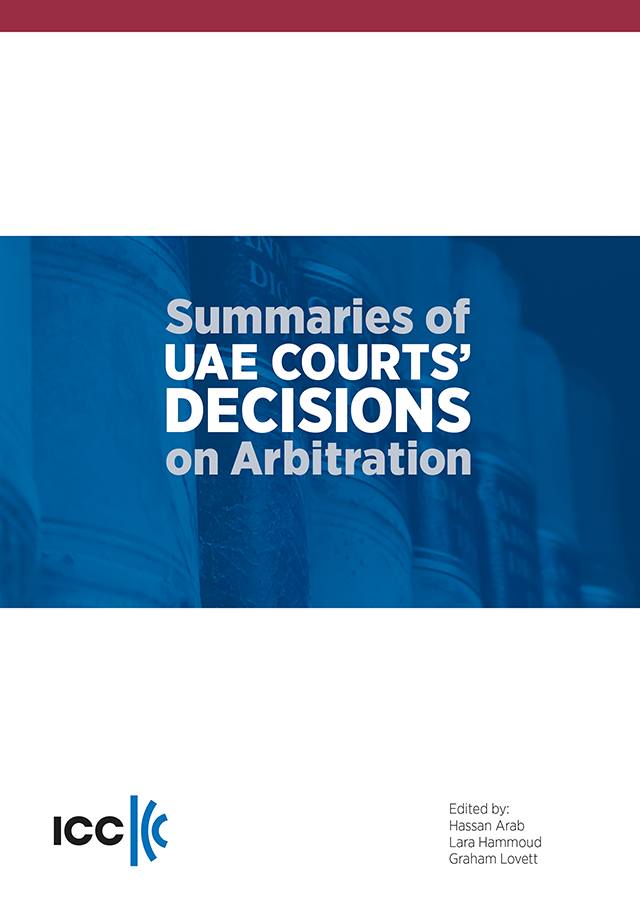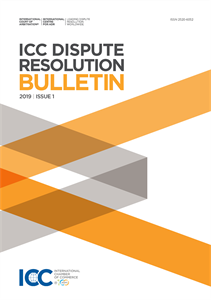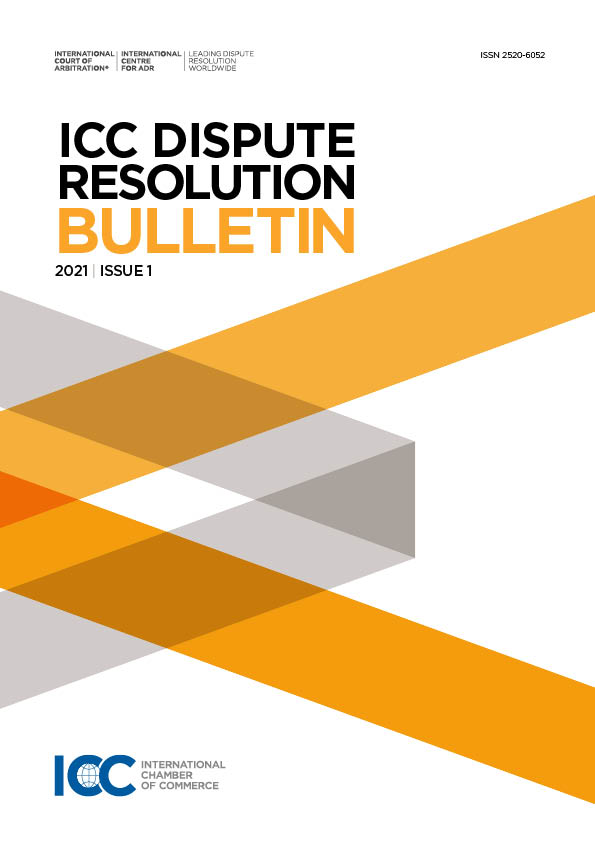ICC Guide to Incoterms® 2020
No. P805E
ISBN : 978-92-842-0522-6
payment Quick
delivery
€55,00
You need help, more information or a quote ?
Help CentreThe latest in a series of best-selling guides explaining how ICC’s world-famous trade terms apply in practice, ICC Guide to Incoterms® 2020 provides answers to the most important and recurring questions that will be asked about the Incoterms® 2020 rules.
What is the Guide about?
The Guide explains the changes since the last Incoterms® rules, looks at the differences between the terms, and provides an overview of buyers’ and sellers’ obligations. The guide also explains the evolution of the Incoterms® rules since 1936 and how they work in conjunction with contracts of sale, insurance and payment as well as the consequences following from the choice of the different terms. Detailed section-by-section comments on each of the Incoterms® rules are presented in a clear, user-friendly manner.
It is a lucidly written, practical book that is the standard support tool for all users of the Incoterms® 2020 rules.
Who will the Guide appeal to?
Buyers, suppliers, lawyers, transport/logistics companies, customs authorities, insurance professionals and international business professors/students.
| Code ISBN : | 978-92-842-0522-6 |
| Weight : | 0.9180 kgs |
| Number of pages : | 244 |
| Publishing date : | 2022 |
| Language : | English |
| Format in cm : | 19.1*27.3 |
INTRODUCTION . . . . 9
- The evolution of the Incoterms® rules from 1936 to 2020 . . . 10
- Incoterms evolves with international trade. . . . 11
- Recent developments in the Incoterms® rules. . . . . 12
- The sales contract and additional contracts. . . . . 13
UNDERSTANDING THE INCOTERMS® RULES. . . . . 17
- What are the Incoterms® rules and what can they do for you? . . . 18
- Referencing the Incoterms® rules in a contract of sale . . . . 18
- What the Incoterms® rules do not do for you . . . . 19
- The Incoterms® rules and contracting practice. . . . 21
- The need for interpretation of “key words” . . . . 21
- The most common practice. . . . 21
- The FOB point. . . . . 22
- EXW and the seller’s assistance. .. .. . 22
- Containerisation. . .. . . 22
- Checking how the goods are handed over for carriage. . . . 23
- The seller’s duty to provide substitute goods . . . . 24
- Checking availability of documents required under the Incoterms® rule. .. . . 24
- Why are as many as 11 Incoterms® rules required? . . . . 24
- Which Incoterms® rule should be chosen?. . . . . 25
- Terms and business strategies. . . . 25
- The Incoterms® rules and the contract of carriage. . .. . 25
- Charter parties. . .. . . 26
- Usual, normal and suitable carriage. .. . . 27
- The bill of lading. .. . . 27
- Sale of goods in transit. . . . . 28
- The duties under the Incoterms® rules to load and unload the goods. . . . 28
- The duties connected to export and import clearance.. . . . 29
- Economic sanctions and export controls. . . . 29
- EXW and export formalities. . . . . 30
- Customs-free regions. . .. . . . 30
- Responsibility for charges. . . . . . 31
- The Incoterms® rules and insurance. . . .. . . 31
- Insurance when the parties use FOB instead of FCA. . . . . 31
- Insurance under CIF and CIP. . . . . 32
- When insurance is excluded. . . . . . 32
- Risks of war and labour disturbances. . .. . 32
- The Incoterms® rules and documentary credits. . . . . 32
- The Incoterms® rules and electronic commerce. . . . . 34
- Variations of the Incoterms® rules. . . . . 34
- Additions to EXW. .. . . 35
- Additions to FOB. . . . . 35
- Additions to FCA. . .. . . 35
- Additions to the C terms. . . . 35
- The Incoterms® rules and other terms in the contract of sale. . . . 36
- Increase of costs after the contract is concluded. . . . . . 36
- Risk of performance if goods are lost or damaged. .. . . 37
- Non-conforming goods. . . . . 37
- Transfer of risk v. transfer of property rights. . .. . 37
- The Incoterms® rules and dispute resolution. . . . 37
- The choice of arbitration. . . . . . 37
- Jurisdiction of the arbitral tribunal. . . .. 38
- Alternatives to arbitration and litigation. . . . . 38
- Need for specificity in referencing arbitration. . . . . 38
THE FOUR CATEGORIES OF INCOTERMS® RULES: MAIN COMPONENTS.. . . 39
- Important differences between shipment and arrival contracts. . . . 40
- The abbreviations: E, F, C and D terms. . . . 40
- The Incoterms® 2020 rules. . . . 41
- The term EXW: placing the goods at the disposal of the buyer. . . . 41
- F terms and C terms: the carriage-related terms. . . . . 42
- F terms: main carriage not paid by seller.. . . . . 42
- C terms: main carriage paid by seller. . .. . 43
- D terms: delivered terms (DAP, DPU and DDP). . . 46
SELLER’S AND BUYER’S OBLIGATIONS: AN OVERVIEW. . . . 51
- Sections A1 and B1: the obligation to exchange goods for money. . . . 52
- Sections A2 and B2: the seller’s obligation to deliver and the buyer’s obligation to take delivery.. . . 52
- The delivery obligation. . . . . 52
- Delivery at the seller’s premises (EXW and FCA). . . . . 53
- Delivery at the buyer’s premises . . . . 53
- Delivery at the waterfront under DAP and DPU. . . . . 53
- The buyer’s acceptance of the seller’s handing over for carriage. . . . . 54
- The buyer’s obligation to receive the goods from the carrier . . . . . 54
- Sections A3 and B3: the transfer from seller to buyer of the risk of loss of or damage to the goods. . . 54
- The “price risk”.. . . . 54
- Premature transfer of risk. .. . 55
- Identification of the contract goods. . . . 55
- Using force majeure clauses to protect the seller from the “breach of contract risk”. . . . 55
- Cases of delay. .. . . 55
- Sections A2, B2 and A4, B4: division of functions between the parties.. . . 55
- For economy of transport, do not divide functions. .. . . 56
- Additional service to the buyer under the F terms. . . . 56
- The custom of the port. . . . . . 56
- Caution when using FOB if the custom of the port is not known . .. . 56
- Handing over to the carrier under the C terms . .. . . 57
- Dividing the costs of discharge at destination. . .. . . . 57
- Sections A4 and B4: party to make the contract of carriage . . . . . 57
- Section A5: the seller’s insurance obligation. . . . . . 57
- Freedom of insurance restricted . .. . . 58
- Section A6 and B6: the parties’ duties to provide proof of delivery or of having taken delivery and the transport documents. .. .. . 58
- CFR, CIF and on board documents. . . .. . 58
- Surrender of original bill of lading essential. . . 59
- Non-negotiable transport documents. . . . 59
- Payment against sea waybills requires caution . . . . 59
- The problems of replacing bills of lading by electronic messages. . . . 59
- The “usual transport document” under CFR and CIF. . . . 60
- Transport document as proof of delivery. . . . 60
- Documents required to obtain delivery under D terms. . . . 60
- Transport documents for carriage by sea . . . . 61
- Delivery orders. . . . . 61
- Sections A7 and B7: the obligation to clear the goods for export and import. .. . . 61
- Take precautions against the risk of export and import prohibitions. . . . 61
- Obtaining assistance to clear customs . . . 62
- Sections A7 and B7: security measures and the changing role of customs . . . 62
- Sections A7 and B7: pre-shipment inspection. . . . 63
- Section A8: the seller’s checking, packaging and marking obligations. .. . . 63
- Sections A9 and B9: division of costs between the parties. . . 64
- Main principle of distribution of costs .. . . 64
- The four main categories of costs. . . . 64
- Costs related to dispatch, carriage and delivery. . . . 64
- Costs for export, import and security clearance. . . 65
- Costs for services, assistance and information. . . 65
- Costs of insurance. . .. . . 65
- Cost distribution systems. . . . . 65
- Sections A10 and B10: notices. . . . . 66
- Conditions for the buyer’s giving notice. .. . 66
- Conditions for the seller’s giving notice.. . . . 66
- Sufficient notice. . . . . 66
- Failure to give sufficient notice . . . . . 66
INCOTERMS® 2020, A DETAILED COMMENTARY
Why 11 different Incoterms® rules? And what has changed from Incoterms® 2010?. . . . 67
- A summary of the 11 Incoterms® rules . . .. 68
- What has changed in Incoterms® 2020?.. . . . 69
GROUP I: ANY MODE OR MODES OF TRANSPORT EXW • FCA • CPT • CIP • DAP • DPU • DDP. . . . 71
- EXW | EX WORKS. . . . . 72
- FCA | FREE CARRIER. . . . . 84
- CPT | CARRIAGE PAID TO. . .. . .100
- CIP | CARRIAGE AND INSURANCE PAID TO.. . .116
- DAP | DELIVERED AT PLACE. . . . .132
- DPU | DELIVERED AT PLACE UNLOADED. . . .146
- DDP | DELIVERED DUTY PAID. .. . . . .160
GROUP II: RULES FOR SEA AND INLAND WATERWAY TRANSPORT FAS • FOB • CFR • CIF. . . . . . .173
- FAS | FREE ALONGSIDE SHIP. . .. .174
- FOB | FREE ON BOARD. . . . . .187
- CFR | COST AND FREIGHT. . . . . . .200
- CIF | COST INSURANCE AND FREIGHT. . . . . . .216
ROLE OF THE INCOTERMS® RULES IN AN INTERNATIONAL CONTRACT OF SALE. . .. . .233
- CHOICE OF TRADE TERMS. . . .234
- GROUP I: ANY MODE OR MODES OF TRANSPORT. . . .234
- GROUP II: SEA AND INLAND WATERWAY TRANSPORT.. . .234
- CHOICE WITHIN GROUP I. . . . .234
- CHOICE WITHIN GROUP II . .. . .234
- THE INCOTERMSRULESINC ONJUNCTIONWITHO THERTERMS OF THE CONTRACT AS SET FORTH IN THE ICC INTERNATIONAL SALE CONTRACT . . . .235
- What happens if:. . . . . .235
- Answer:. . .235
- THE INCOTERMS RULES IN CONJUNCTION WITH CISG. . . . .236
- What happens if:.. . .236
- Answer:. . . .236
TRANSFER OF RISK AND COST. . . . . .237
- About the authors. . .. . . 238
- Publications . . .. . .239
- Digital Tools . . . . . .242
The ICC Guide to Incoterms® 2020 is presented by Johnny Herre and Oscar Tiberg (Former Chair and current Chair of the Swedish ICC Commercial Law & Practice Committee respectively.)

